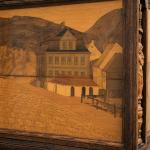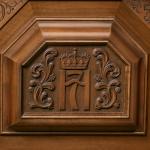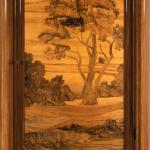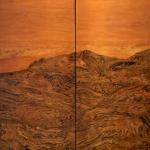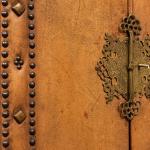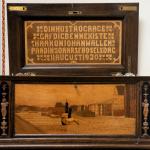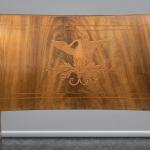Knag: Crafted furniture from Bergen
Bergen once had an active set of cabinetmakers, artisans who made wood furniture, and the greatest of them was the firm Chr. Knag. This winter you can experience impressive craftsmanship and design at KODE in the exhibition “Knag – Crafted furniture from Bergen”.
View digital exhibition here
The furniture company Chr. Knag was founded by Christopher Severin Knag in 1878 and carried on under his son Alf Knag and other family members. They built up a prestigious firm that made furniture to the Royal Family and the well-to-do around the country. The company was located at Kroken, and later moved to Domkirkegaten where it remained until the Chr. Knag shut down in 1975.
The exhibition displays furniture and interiors from the workshop of Chr. Knag. The exhibition has been made possible by loans from a number of private and public owners in addition to KODE’s own pieces.
Prize-winning handicrafts
Chr. Knag produced high quality furniture and participated in a number of national and international exhibitions.
By means of participation in the annual international expositions, in metropolises such as Rio and Paris, the firm attracted skilful artisans from Norway and abroad. Knag’s furniture won the Grand Prix at the St. Louis 1904 World’s Fair.
Furniture for every taste
It’s a big jump from a throne to a bench or wood stool. This difference is not only in sitting comfort but also comfort and the signals the furniture transmits. Many examples of Knag’s furniture reverberated with the public’s demands for comfortable furniture or their tastes in particular interior styles.
A uniform, a ball gown, a suit and tie or a saggy pair of sweatpants all relay signals about whom we are and how we want to be considered. Furniture conveys a similar message linked to history, traditions and status.
Intarsia and the Dragon Style
Chr. Knag became especially renowned for its intarsia work, a decorative feature using thin inlays of various types or colours of wood which formed motifs and patterns on the furniture surface.
The firm made many types of furniture, mostly in historicist styles like Renaissance, Baroque, Rococo and Empire, but we also see an inspiration of the Dragon Style and rural folk furniture. In Knag we see imitations of furniture from antiquity 2,000 years ago and forward to the Empire in the early 1800s.
Quality and Sustainability
Knag’s furniture was expensive because it was the product of solid craftsmanship and cabinetmaking expertise. The furniture was – and is – found in many places, especially in Bergen. The firm delivered to many public buildings as well as the city’s best hotels and businesses, and of course to thousands of private homes.
The large furniture workshops are now gone in Bergen and furniture production has become industrialized and much has moved abroad. But Knag furniture lives on. Some as magnificent furniture in fine living and dining rooms, others as flea-market bargains in student digs. This is furniture that can be repaired and reupholstered for use by future generations.
Knag’s furniture represents a sustainable production for this reason. But above all, it represents a vital chapter of Norway’s, and Bergen’s, furniture history.
About the Exhibition
The curator of the exhibition is Trond Indahl.
The exhibition will be on display at KODE 1 until 24 January 2021.
- 18 Sep 2020 to 24 Jan 2021
- Kode 1
- 150 / 100 / 0 *
* Adults: NOK 150, Students: NOK 100, Free admission for children and KODE members. The ticket gives admission to all exhibitions at KODE for two days

